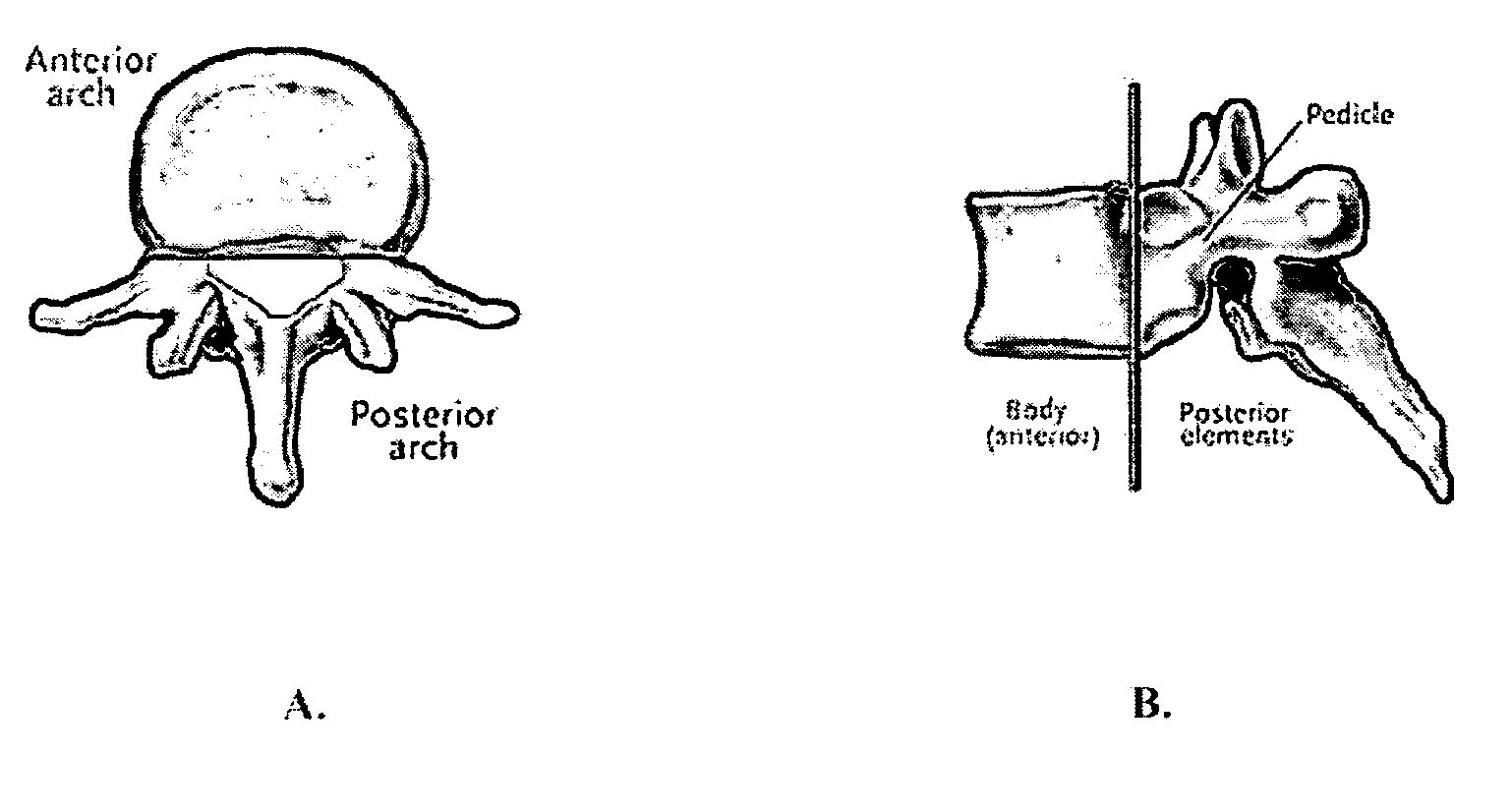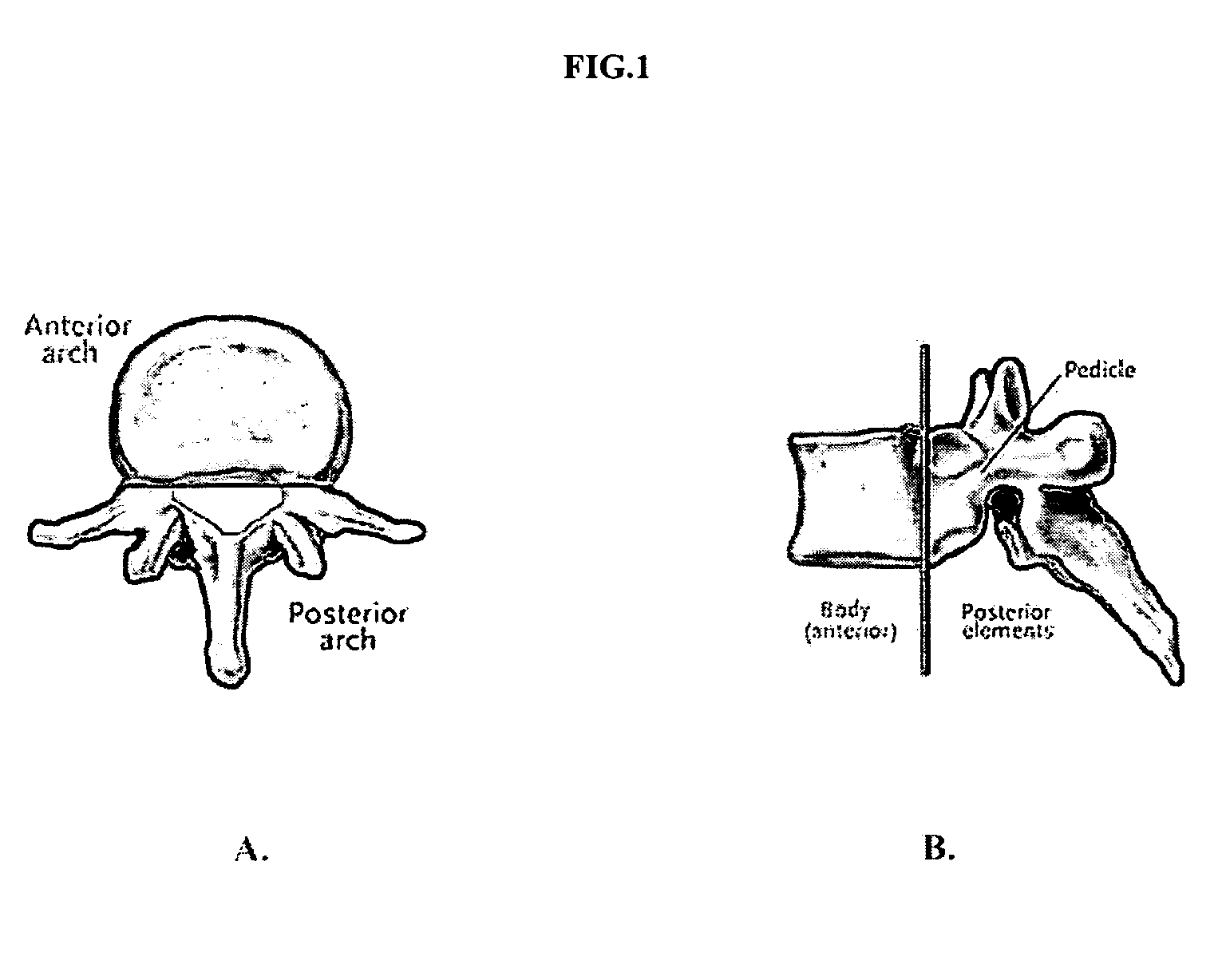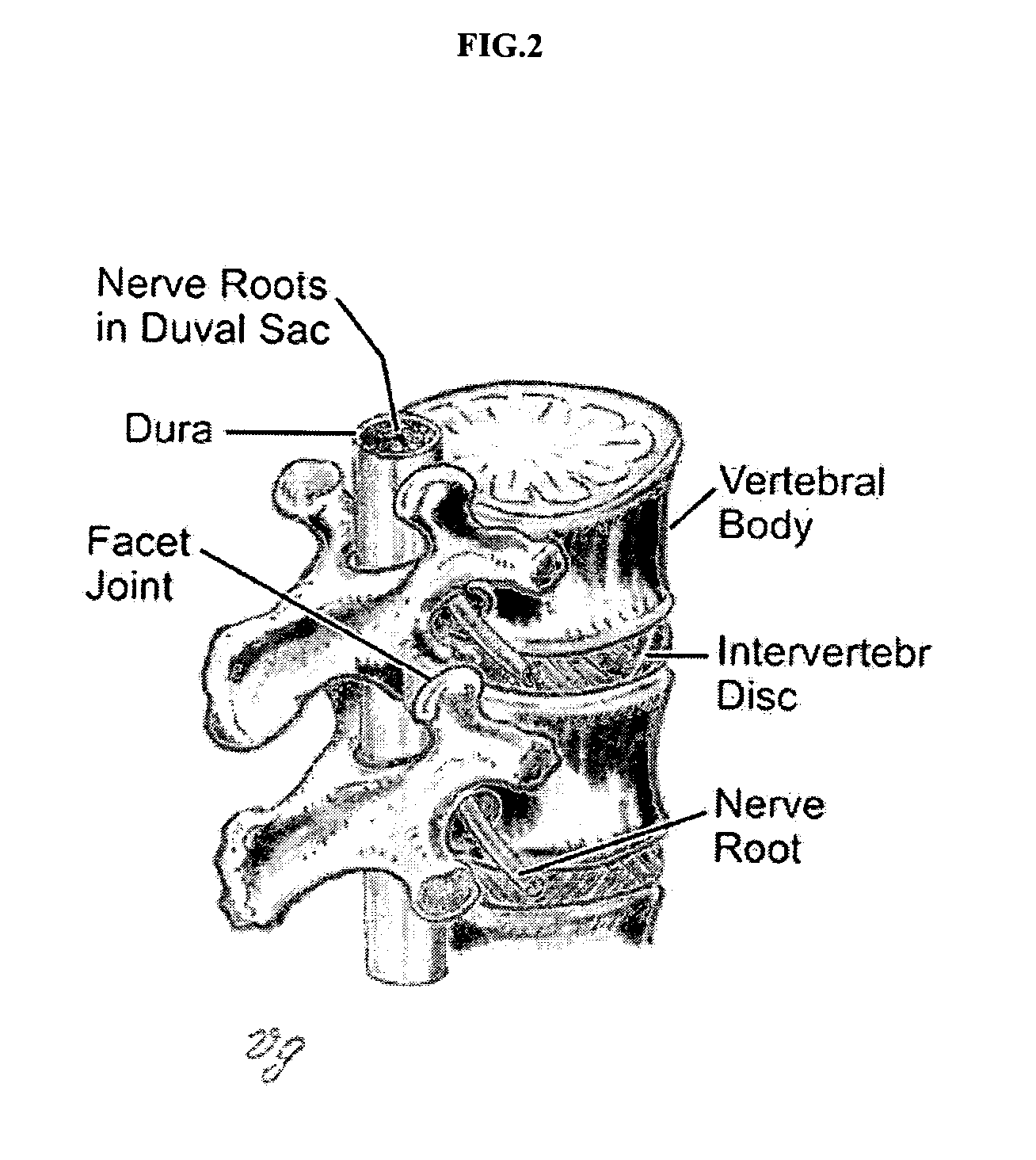Methods of employing calcium phosphate cement compositions and osteoinductive proteins to effect vertebrae interbody fusion absent an interbody device
a technology of calcium phosphate cement and compositions, applied in the field of methods of employing calcium phosphate cement compositions and osteoinductive proteins to effect vertebrae interbody fusion absent an interbody device, can solve the problems of non-union, short handling time, damage to surrounding tissues, etc., and achieves rapid stabilization and strength. , the effect of increasing the functional ability of the patient and preventing further vertebral collaps
- Summary
- Abstract
- Description
- Claims
- Application Information
AI Technical Summary
Benefits of technology
Problems solved by technology
Method used
Image
Examples
example i
[0076]5 g of anhydrous calcium hydrogen phosphate, 4 g tetracalcium phosphate, and 7 g of hydroxyapatite are separately ground for 30 minuets to get particle sizes of 1-10 μm. The finely ground powders are combined in a bowl. The powders, being in one bowl, are further combined with an 0.7 g sodium bicarbonate and 0.3 g of lactic acid. 5 mls of a 1:1 mixture of distilled water and saline is added to the powders. This slurry is hand mixed with a spatula by pressing the slurry against the sides of the bowl and continually spreading and recombining, thereby forming a flowable paste. The mixing process should last anywhere from 45 seconds to 60 seconds. At such time, 0.4 g of rhBMP-2 is added to the paste. Mixing is continued for another 15 seconds to 60 seconds. An effect amount of the flowable paste is removed from the bowl and placed into the barrel of a syringe having a 10 to 12 G needle. The flowable paste is injected into the anterior portion of a disc space or into a fracture of ...
example ii
[0077]The procedures of Example 1 are repeated in Example 2, save for the delivery method of both cements. The flowable paste and the fast setting cement are layered in same barrel of the syringe for successive delivery of both materials to a vertebral defect. 0.5 ml of the flowable paste comprising the osteo-inductive factor is placed in the barrel of the syringe followed by 0.5 ml of a commercial fast setting cement. Both materials are delivered into the anterior portion of a disc space or into a vertebral fracture.
PUM
| Property | Measurement | Unit |
|---|---|---|
| compressive strength | aaaaa | aaaaa |
| temperatures | aaaaa | aaaaa |
| particle size | aaaaa | aaaaa |
Abstract
Description
Claims
Application Information
 Login to View More
Login to View More - R&D
- Intellectual Property
- Life Sciences
- Materials
- Tech Scout
- Unparalleled Data Quality
- Higher Quality Content
- 60% Fewer Hallucinations
Browse by: Latest US Patents, China's latest patents, Technical Efficacy Thesaurus, Application Domain, Technology Topic, Popular Technical Reports.
© 2025 PatSnap. All rights reserved.Legal|Privacy policy|Modern Slavery Act Transparency Statement|Sitemap|About US| Contact US: help@patsnap.com



